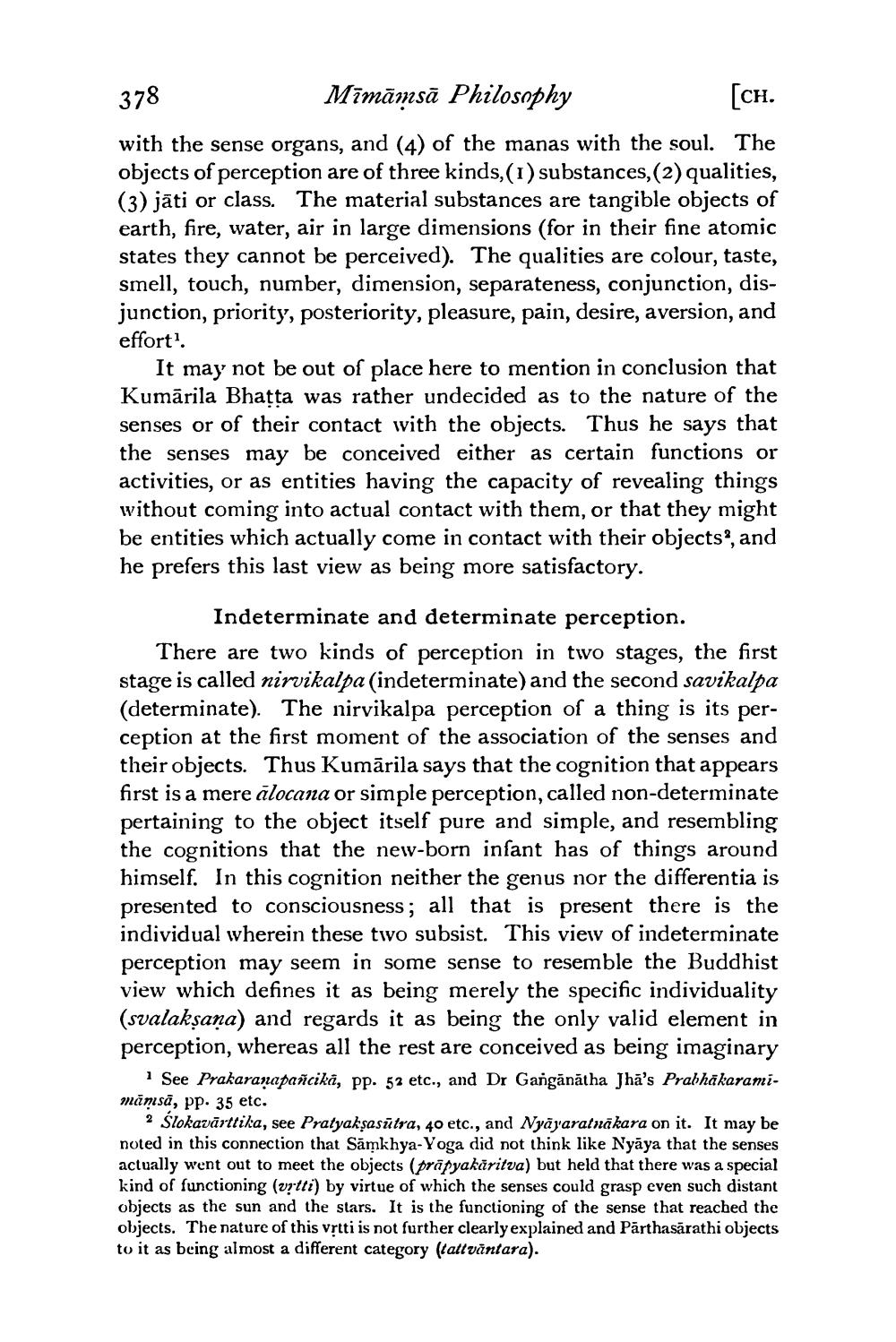________________
378
Mimāmsā Philosophy
[CH.
with the sense organs, and (4) of the manas with the soul. The objects of perception are of three kinds, (1) substances, (2) qualities, (3) jāti or class. The material substances are tangible objects of earth, fire, water, air in large dimensions (for in their fine atomic states they cannot be perceived). The qualities are colour, taste, smell, touch, number, dimension, separateness, conjunction, disjunction, priority, posteriority, pleasure, pain, desire, aversion, and effort1.
It may not be out of place here to mention in conclusion that Kumārila Bhaṭṭa was rather undecided as to the nature of the senses or of their contact with the objects. Thus he says that the senses may be conceived either as certain functions or activities, or as entities having the capacity of revealing things without coming into actual contact with them, or that they might be entities which actually come in contact with their objects, and he prefers this last view as being more satisfactory.
Indeterminate and determinate perception.
There are two kinds of perception in two stages, the first stage is called nirvikalpa (indeterminate) and the second savikalpa (determinate). The nirvikalpa perception of a thing is its perception at the first moment of the association of the senses and their objects. Thus Kumārila says that the cognition that appears first is a mere alocana or simple perception, called non-determinate pertaining to the object itself pure and simple, and resembling the cognitions that the new-born infant has of things around himself. In this cognition neither the genus nor the differentia is presented to consciousness; all that is present there is the individual wherein these two subsist. This view of indeterminate perception may seem in some sense to resemble the Buddhist view which defines it as being merely the specific individuality (svalakṣana) and regards it as being the only valid element in perception, whereas all the rest are conceived as being imaginary
1 See Prakaranapañcikā, pp. 52 etc., and Dr Ganganatha Jha's Prabhakaramimāmsā, pp. 35 etc.
2 Slokavārttika, see Pratyakṣasutra, 40 etc., and Nyayaratnakara on it. It may be noted in this connection that Samkhya-Yoga did not think like Nyaya that the senses actually went out to meet the objects (prāpyakāritva) but held that there was a special kind of functioning (vrtti) by virtue of which the senses could grasp even such distant objects as the sun and the stars. It is the functioning of the sense that reached the objects. The nature of this vṛtti is not further clearly explained and Parthasarathi objects to it as being almost a different category (tattväntara).




